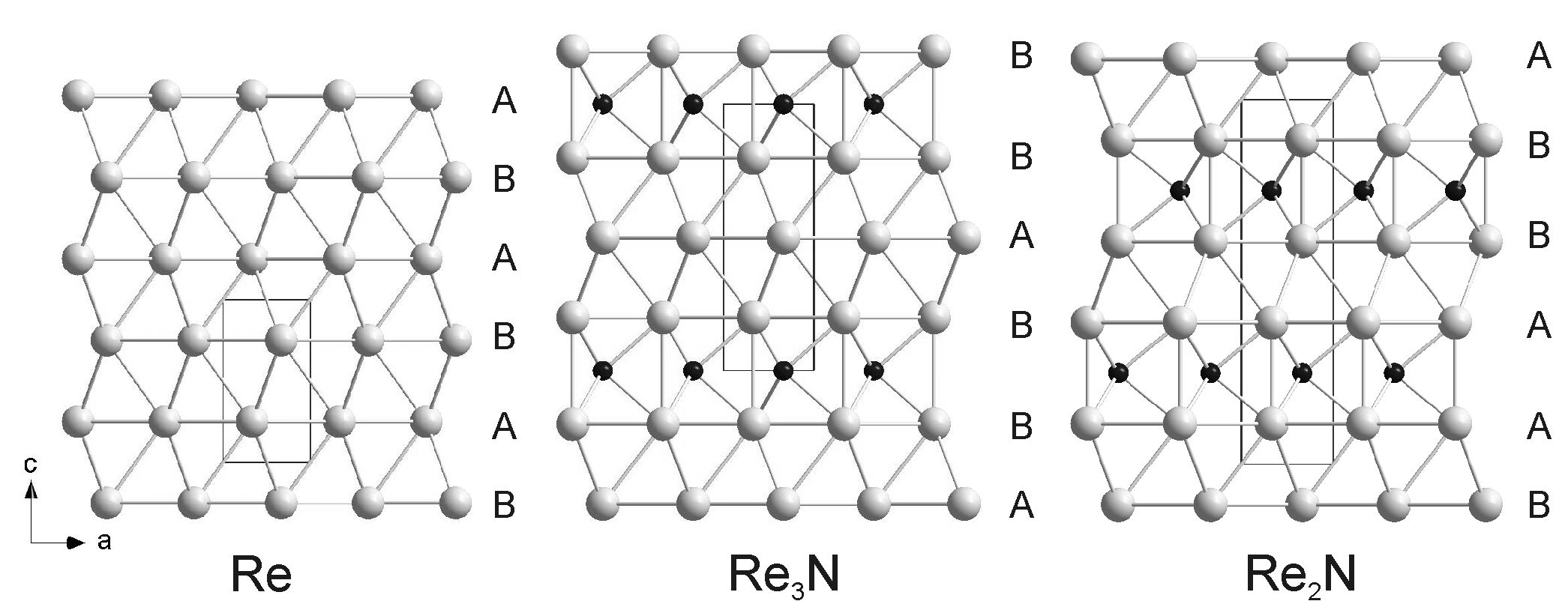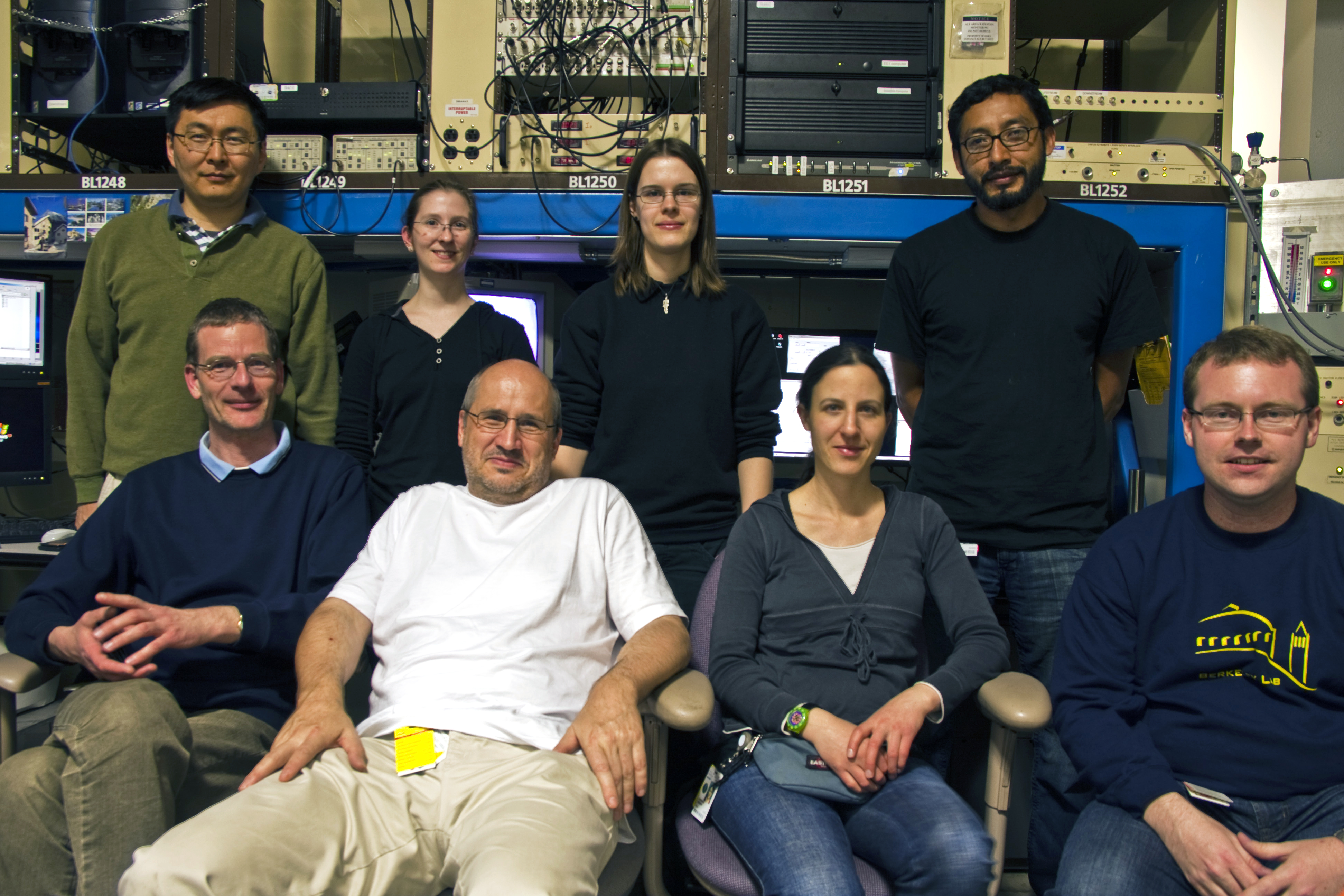Some current challenges in aerospace engineering and fission/fusion applications require materials that are mechanically and chemically stable at extreme conditions. One such class of materials is ultrahigh-temperature ceramics, which are often binary transition-metal carbides, borides, or nitrides. It is therefore of great interest to understand how to synthesize new compounds of this type. A research team from Germany, the United Kingdom, and Berkeley Lab working at ALS Beamlines 12.2.2 and 12.3.2 has now synthesized and characterized two novel bulk rhenium nitrides, Re2N and Re3N. Both phases are extremely incompressible, and Re3N is also better placed for potential technological applications than are other incompressible transition-metal carbides and nitrides of the period-six elements because it can be formed at relatively moderate pressures and temperatures.

The introduction of smaller atoms such as boron, nitrogen, or carbon into interstitial sites in close-packed transition-metal lattices leads to dramatic changes in the physical properties of the compound with respect to that of the metal. For example, the incorporation of carbon into group IV or V transition metals leads to an increase in melting temperature by 1000–1500 K, yielding binary transition-metal carbides with extremely high melting points. This characteristic, in addition to high hardness and incompressibility, is required for materials used in abrasive or coating applications.
The origin of the unusual properties is the complex bonding found in these compounds, where there are metal–metal, metal–nonmetal, and nonmetal–nonmetal contacts. Combining metals with high densities of valence electrons (such as rhenium, osmium, and iridium) with light elements is especially promising; however, extreme pressure and temperature conditions are required to induce reactions.
In order to synthesize rhenium nitrides, rhenium foil was pressurized in the range from 10–27 GPa together with nitrogen within a diamond-anvil pressure cell and then heated by two laser beams, one from each side, up to 2800 K. Re3N can be synthesized between 10.5–16 GPa and 1700–2250(150) K, and Re2N was obtained at 20(2) GPa and ~2000 K. Reaction products were analyzed by powder x-ray diffraction, in combination with density functional theory calculations. Structural models were proposed and further confirmed by x-ray Laue microdiffraction, allowing for detailed analysis of phase distribution and grain sizes within the samples.

By combining a heavy transition metal with a light, covalent-bond-forming element and adding pressure and temperature, researchers synthesized two novel materials with both high incompressibility and proposed high hardness. An incompressible material is difficult to compress elastically. It is resistant to volume and/or linear compression. A hard material resists plastic (as opposed to elastic) deformation, which involves irreversible motion of the atoms with respect to each other.
Interesting results were obtained on the crystal chemistry of period-six transition-metal nitrides and carbides. Researchers found that nitrogen dissociates during Re3N and Re2N synthesis, similar to the phase formation of TiN, TaN, and Ta2N3 from the elements. This is in contrast to other known transition-metal nitrides of period-six elements with higher atomic numbers, i.e., OsN2, IrN2, and PtN2. Close structural relationships are observed with rhenium carbide, Re2C, which was also synthesized at high pressures and temperatures.
Re3N and Re2N were characterized to be ultra-incompressible, with bulk moduli of >400 GPa, similar to the most incompressible binary transition-metal carbides and nitrides found to date and significantly less compressible than pure rhenium. The rhenium nitrides synthesized here are potential candidates as ultrahard materials and may find some special applications in electron conductivity at extremely high temperatures and pressures.

Contact: Alexandra Friedrich
Research conducted by A. Friedrich, B. Winkler, L. Bayarjargal, and W. Morgenroth (Geowissenschaften, Goethe-Universitat, Germany), E.A. Juarez-Arellano (Universidad del Papaloapan, Mexico), V. Milman (Accelrys, UK), K. Refson (Rutherford-Appleton Laboratory, UK), and M. Kunz and K. Chen (ALS).
Research funding: The German Research Foundation and the Federal Ministry of Education and Research (Germany). Operation of the ALS is supported by the U.S. Department of Energy, Office of Basic Energy Sciences.
Publication about this research: A. Friedrich, B. Winkler, L. Bayarjargal, W. Morgenroth, E.A. Juarez-Arellano, V. Milman, K. Refson, M. Kunz, and K. Chen, “Novel rhenium nitrides,” Phys. Rev. Lett. 105, 085504 (2010). doi:10.1103/PhysRevLett.105.085504
ALS SCIENCE HIGHLIGHT#229